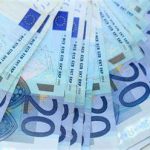The Search for the very best Counterfeit Money Provider: A Deep Dive into Risks and Solutions
Amidst the intricacies of modern-day economies, the subject of counterfeit money remains a pressing issue. The impact of counterfeit currency is significant, causing losses for companies and wearing down public rely on monetary systems. This article aims to explore the nuances surrounding counterfeit money, the approaches used by counterfeiters, and the capacity (albeit prohibited) "providers" in this shadowy marketplace. Furthermore, it discusses the procedures to combat counterfeiting and comprehend the more comprehensive social and legal ramifications.
Understanding Counterfeit Money
Counterfeit money refers to replica currency produced with the intent to trick and fraudulently use it as real money. Counterfeiting has a long history and has actually developed substantially with advancements in innovation. In the last few years, the rise of digital platforms and advanced printing strategies has actually made it much easier for counterfeiters to produce high-quality replicas of legitimate currency.

The Dangers of Counterfeit Currency
Economic Impact: Counterfeit currency undermines the economy by increasing inflation and reducing the value of real currency.
Loss of Trust: It deteriorates customer self-confidence in the financial system, causing higher scrutiny of financial deals and practices.
Legal Consequences: Being involved with counterfeit money, whether purposefully or unwittingly, can lead to extreme legal charges, consisting of jail time and heavy fines.
Increased Costs for Businesses: Businesses deal with extra costs associated with determining counterfeit notes, including training employees and carrying out more sophisticated confirmation systems.
Typical Characteristics of Counterfeit Bills
To understand the nature of counterfeit money, it is vital to understand the common characteristics that can assist recognize them:
Irregular Quality: Counterfeit bills frequently have inferior printing quality, like fuzzy edges or blurred printing.
Poor Paper Quality: Legitimate currency is normally printed on special paper that has a special texture and feel.
Missing Watermarks: Genuine expenses include watermarks that are challenging to reproduce.
Incorrect Security Features: Items like security threads, microprinting, and holograms might be absent or badly reproduced on counterfeit expenses.
Color Discrepancies: Counterfeit costs may exhibit colors that are not real to the real currency due to insufficient printing approaches.
The Illegality of Counterfeit Providers
Though numerous sources may exist that offer counterfeit currency, it is vital to highlight that these sources run outside the law. Engaging with counterfeit money providers is criminal and features severe implications. 100% echtes falschgeld work relentlessly to split down on counterfeit operations, utilizing sophisticated technologies and investigative techniques to find counterfeiters.
Bottom Line to Consider:
Legality: Counterfeiting is illegal in all forms and can lead to serious criminal charges.
Ethical Implications: Contributing to counterfeit activities not only jeopardizes one's own future but also damages society as a whole.
Scams Prevention: Investing in genuine organization practices yields far better security and returns compared to involvement in the counterfeit economy.
Measures to Prevent Counterfeiting
Governments and monetary institutions take many steps to combat counterfeiting. These are some approaches that can help reduce the incidence of counterfeit currency:
Boosted Security Features: Nations constantly upgrade their currency with innovative security features, making counterfeiting significantly hard.
Public Education Campaigns: Governments launch awareness projects to educate the public about how to determine counterfeit costs.
Training for Businesses: Financial organizations provide training for services to recognize counterfeit currency and execute steps for detection.
Usage of Technology: Cutting-edge innovations like ultraviolet scanners and digital currency systems assist in early detection of counterfeit costs.
Police Collaboration: Agencies work closely with banks to track and capture counterfeiters.
The Future of Currency and Counterfeiting
As society approach a more digital landscape, the methods of counterfeiting are most likely to evolve. Cryptocurrencies, digital wallets, and electronic payments have actually started to alter the financial landscape significantly. Some experts predict that counterfeit physical currency might diminish as consumers embrace these digital solutions more widely. However, this shift provides its own risks and issues, as cybercrime and digital forgery become significantly prevalent.
Frequently Asked Questions About Counterfeit Money
Q1: What should I do if I receive a counterfeit expense?
If you believe that you have received a counterfeit costs, do not try to pass it. Instead, report it to the local police. They will direct you on the next actions and may collect the counterfeit expense as proof.
Q2: Are all counterfeit costs simple to find?
Not always. Some counterfeit costs can be challenging to identify, especially if they are of high quality and utilize sophisticated printing methods. It's essential to understand the security functions of the currency you manage.
Q3: Can I be punished if I unknowingly accept counterfeit currency?
Generally, knowing participation in counterfeiting carries more extreme charges. Nevertheless, accepting counterfeit currency unconsciously might lead to loss of money and time as you attempt to solve the problem through police.
Q4: How can organizations safeguard themselves against counterfeit bills?
Businesses should buy training staff members to identify counterfeit bills, use confirmation equipment, and stay informed about the most recent security functions in genuine currency.
Q5: Is counterfeiting just a problem in cash transactions?
While money transactions are the most noticeable element of counterfeiting, digital platforms can face their own forms of forgery, primarily through frauds, hacking, and deceptive digital currencies.
Conclusion
The world of counterfeit money is loaded with threats and ethical predicaments. While the concept of obtaining counterfeit currency might seem enticing, it eventually brings significant legal and financial consequences. Understanding the intricacies of counterfeiting-- alongside employing efficient prevention approaches-- will work as the most prudent approach to securing personal possessions and social trust in monetary systems.
